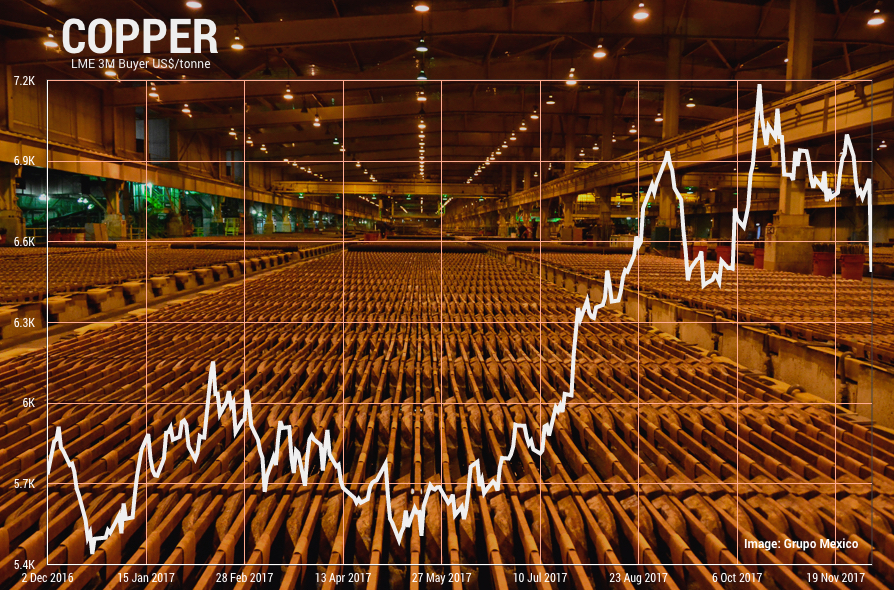 Copper futures trading in New York cratered on Tuesday on doubts about the strength of Chinese demand for the metal, an improving supply picture and a jump in warehouse stocks of the metal.
Copper futures trading in New York cratered on Tuesday on doubts about the strength of Chinese demand for the metal, an improving supply picture and a jump in warehouse stocks of the metal.
Copper on the Comex market for delivery in March, the most active contract declined 4.7% from Monday’s settlement price in heavy volume of more than 4.3 billion pounds touching a low of 2.9430 a pound in afternoon trade, a 10-week low.
On the LME, benchmark copper closed down 4.2% at $6,542 a tonne, which was the worst drop in a single session since July 2015. LME copper also came under pressure from an uptick in warehouse inventories with headline stocks rising 10,650 tonnes to 192,550 tonnes.
2017 will record the first decline in copper mine supply since 2005 as a result of disruptions at the world’s largest copper operations
Last week a gauge of manufacturing activity in China, responsible for nearly half of global consumption of the metal, declined to the lowest in five months in November, but factory managers’ views of the outlook for the next 12 months fell to the lowest level in more than five years.
In a research report released on Tuesday, Capital Economics predicts copper prices will edge lower over the next six months as “optimism about China’s demand fades and both mine supply and refined production revive”:
After falling to US$6,250 per tonne in June 2018, we expect the price of copper to pick up on the back of strong growth in new sources of demand, particularly electric vehicles and renewable energy. Prices could reach $7,000 and $8,000 at end-2018 and end-2019 respectively, up from $6,700 today.
Capital Economics estimates that 2017 will record the first decline in copper mine supply since 2005 as a result of disruptions at the world’s largest copper operations including Escondida in Chile, a joint venture between Rio Tinto and BHP, and Grasberg in Indonesia, owned by Freeport McMoRan.
Capital Economics predicts a 3.5% drop in primary copper supply this year, but a recovery to 2.8% growth in 2018 as world number two producer Peru adds some 300,000 in new production and mines like Norilsk’s Bystrinsky mine in Russia ramp up output. Industrial action in Latin America, particularly in Chile, and more onerous environmental regulations could crimp expected production growth however.
The research firm expects modest 2% output in growth in 2019, but points to numerous projects coming on stream in coming years, including at Rio’s Oyu Tolgoi operation in Mongolia, First Quantum’s Cobre Panama mine and in Zambia where Glencore is expected to restart operations after refurbishing its Mopani mine.
2 Comments
King Blonde
It’s time to short in mining companies. And for those who believe me, it’s time to buy WEG (Brazilian electrical power future).
Rick Hwang
I tweeted on Monday Dec 4, 2017 that copper price will crash. Guess i’m the only person to say that. Has copper hit the bottom? Follow me @MassAnalytic on twitter to find out.